Office Space Design: Ways to Include Privacy
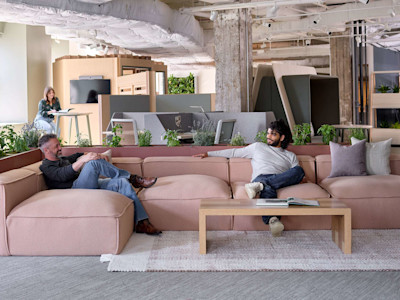
There are many ways to address the need for privacy in the office. From stopping coworkers from looking over your shoulder to eliminating as much noise as possible, privacy does not always mean isolation. The office space design you provide for employees depends on their needs. There is a time and a place for open and shared office space but there is a constant need for the privacy and focus of a well-designed workspace. Free from excessive noise and distractions, a private workspace can be designed in a variety of ways. Commercial office furniture including modern cubicles, acoustic furniture, and even private areas are providing workers with the individual space they need. While we have seen a recent push for hybrid and collaborative workspaces, it is important that we do not compromise employee privacy when they are in the office. When designing an office, all aspects need to be taken into account. Does the office space need to remain private at all times or how often will employees need to work with others? These are all questions that need to be taken into consideration when trying to incorporate privacy into an office space design.
Acoustics
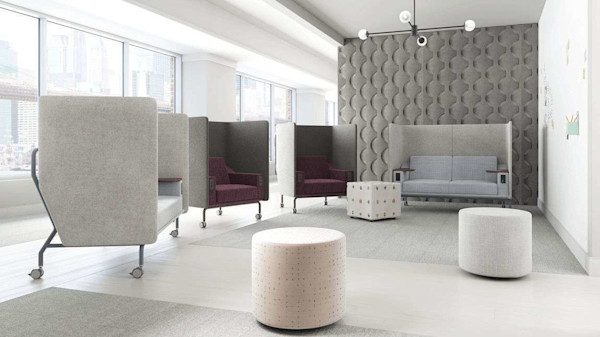
Sound is one of the biggest distractions in an office.
Acoustic panels can serve as a divider similar to a partition but their main purpose is to disrupt sound waves from traveling through an office. This technology can block, absorb, and/or diffuse sound waves. And with multiple colors styles and textures can enhance instead of detracting from your office style. Sound is one of the biggest distractions in an office. Whether or not someone is trying to intentionally disrupt somebody or if there is excessive background noise, sound can and should be managed. Providing employees with the opportunity to perform in a quiet space is essential to maintaining productivity.
Office Pods for Privacy
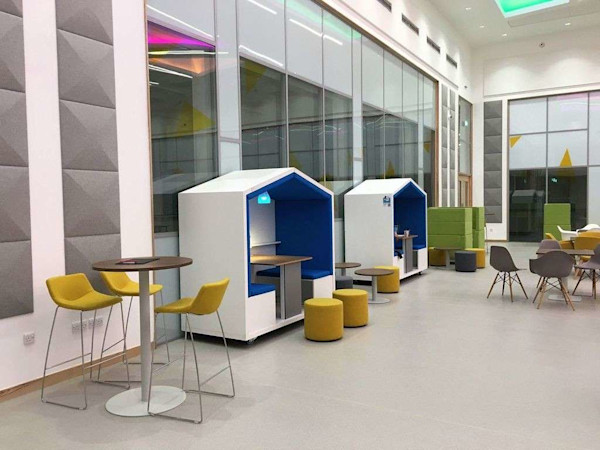
Office pods pair the noise management technology found in acoustic furniture with an encapsulated or semi-encapsulated workspace. An office pod can be something as simple as high-backed lounge chairs covered with sound-absorbing materials.
Providing employees with the opportunity to perform in a quiet space is essential to maintaining productivity.
Another option that provides additional privacy is the mobile privacy pod. This offers booth seating enclosed on the sides and covered overhead. This type of seating provides a workspace to meet in small groups or work individually. Other pods resemble fully enclosed intimate cubicles. Pods generally include USB and charging ports to eliminate the need for anything except an employee and their devices. These full privacy pods include lighting and air ventilation systems as well. The office pod is one of the best ways to provide privacy and focus in an office setting. Regardless of the type of pod, the pod helps block sound and sight and can provide an intimate work setting limiting external distractions. Providing pods for employees as a privacy option helps cut back on social distractions as well.
Office Space Design and Modern Cubicles
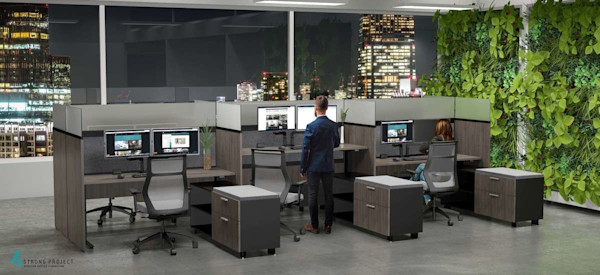
The modern cubicle helps employees create a personal workspace for focus without becoming completely isolated.
With the ability to easily move the cubicles around the office and add or subtract when needed, cubicles are simple and quick to implement with minimal equipment. From the beginning, the purpose of cubicles was to create a private workspace for employees. And modern cubicles continue to provide this space with enhanced styles and functionality. The modern office cubicle easily meets employees’ needs for privacy and quiet without having to make major changes to the layout of an office.
Enhancing Office Space Design with Partitions
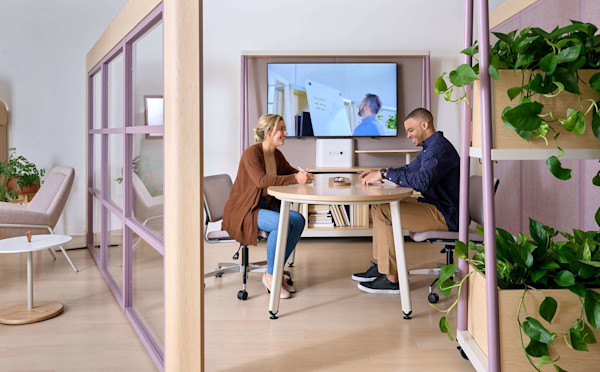
A partition creates a separate space within an open office plan while reducing the overall volume of the environment.
Reconfigure and move partitioning walls and panels as needed. This can create additional flex space within your open office area. While some partitioning walls are floor-mounted with brackets, others are completely free-standing. It is easy to add panels and take them away to create larger or smaller separate areas as needed. A partition is a great way to bring privacy to both groups and individuals throughout the office.
Designated Spaces
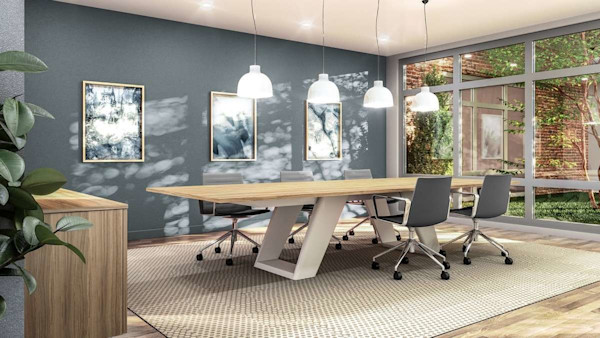
Privacy Glass
Office doors, walls, and even some cubicles use glass as a partition. These glass or plastic barriers have become especially prevalent as we have returned to work post-COVID. While the barriers provided virtually zero privacy aside from a small break in the noise, they did serve as to provide protection from the spread of disease. When applied to barriers, privacy film obstructs views. Privacy film usually gives the glass a frosted appearance. This film is a small, inexpensive change if an office is already fitted with glass or plastic walls and doors. If an office is trying to maintain a specific aesthetic, privacy film comes in different designs. Company culture, logo, and branding can all be incorporated in the privacy film as well.
Adjusting Office Space Design
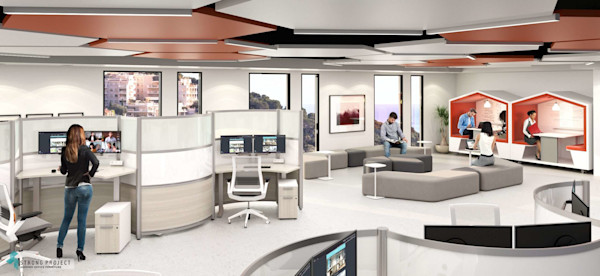
Privacy in the Workplace
The majority of workplaces require areas for privacy and focus. Whether groups need privacy during meetings or individuals at their desks, it is important to provide employees with the necessary tools to do their jobs. Privacy needs will vary based on the task at hand but the idea is the same. Some offices will need only a few designated quiet areas while others will require a quiet area for each person.
Workers value the ability to work uninterrupted in an enjoyable and calming environment.
The acoustic products on the market allow offices to neutralize noise. From partitions to acoustic furniture in hybrid zones, the right solution is out there for your office. The privacy possibilities are endless in the office setting. Privacy in the office might not be a priority for some but these upgrades are about more than privacy. These design methods allow the employees to work more efficiently in a calmer, more relaxing setting. Privacy does not always mean isolation. Workers value the ability to work uninterrupted in an enjoyable and calming environment. Contact StrongProject for a custom-designed layout for privacy and focus in your hybrid workplace. Acoustic Furniture: More Privacy, Less Noise The Sound Barrier - How Office Noise is Hijacking Design Redefining Workspaces: The Comprehensive Guide to Hybrid Workplace Design



